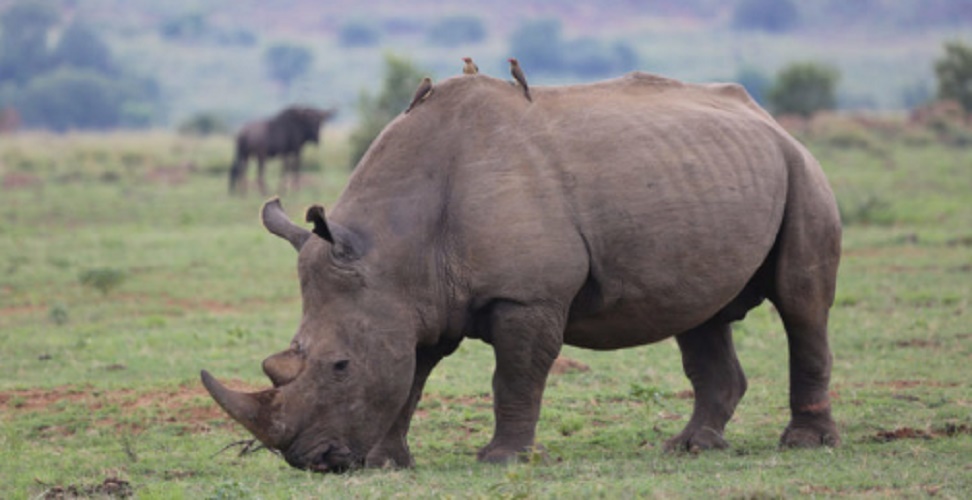What is biological competence?
We explain what is the competition in biology, examples and what is apparent competition. Definition of mutualism and predation.
-
What is biological competence?
In biology , there is talk of competence, that is, of biological competence, to refer to a specific type of relationship between living beings , in which both adapt to the presence of the other trying to obtain the greatest amount of benefit from the available resources , that is to say, in which both compete for the benefit, instead of collaborating for the mutual good.
This type of interactions can occur in terms of territory, food, water or even fertile couples to reproduce, either between individuals of the same species (intraspecific) or of different species (extra-specific).
Be that as it may, this competition dynamic benefits only its winners and sentences its losers to subalternity or, in the long run, to extinction. The latter is fundamental in evolution , since the pressure exerted by natural selection occurs under the principle of competitive exclusion: those suitable species survive and reproduce, and those little or not at all suitable, on the other hand, become extinct.
Thus, there are different types of biological competence, such as:
- Competition for interference. An individual interferes, that is, hinders, prevents, the process of feeding , survival or reproduction of another, through methods of violence. It also occurs when an individual denies another entrance to their habitat or territory.
- Competition for exploitation. It is a type of indirect competition, which occurs when a limited and common resource between two individuals is the result of competition, causing the benefit of one and scarcity for the other, be it food , living space or sunlight .
- Apparent competition. It occurs when two species are prey to a common predator, and compete for danger-free zones.
The competition can also cause evolutionary strategies in the species , as occurs when one of the two species changes its evolutionary niche in the presence of a stronger competitor, adapting to its presence and guaranteeing its survival.
-
Examples of competence in biology

Some simple examples of biological competence are the following:
- The males of many species of birds carry a plumage of striking colors, which they use during a complex mating dance. And as several males can pretend to the same female, they must compete for her, trying to attract her with her colors and movements , and thus avoiding that others reproduce with her.
- If we sow several plants in the same matero, we can observe how they compete day by day for access to irrigation water and sunlight, despite the fact that the other plants wilt and dry. The winning plant will grow more, snatching the other resources for photosynthesis .
- The animals territorial, like dogs, often competing for their territory, marking it with their urine frequently (and smell), and attacking other dogs, especially males, who enter its territory without permission. That is the most common reason for the street confrontation of our dogs when we take them out for a walk.
-
Apparent competition
The apparent competition takes place between the prey of the same predator , and its name is due to the fact that its beneficial effects for a species are only temporary. This is explained as follows: suppose a predator (shark) can feed on two different species (tuna and bream), and opt for one of them at a given time (bream). This would mean an apparent benefit to the other (tuna), which has been released from its competitor and thus can be reproduced instead.
However, when the population of this last species (tuna) increases, so will the population of the predator (shark), which has abundant food available, and as the population of the initially devoured prey (bream) is smaller, the predator will opt on the other (tuna), balancing populations. So, at the end of the day, the competition between them was not really a competition.
-
Mutualism

Mutualism is a form of biological interaction contrary to the logic of competition , since in it both species or both individuals benefit from relating. It is a form of mutual and reciprocal help, similar to symbiosis, in which organisms cooperate.
A simple example of mutualism is the tolerance shown by rhinos, hippos and other massive animals in the presence of certain wading birds on their loins . This is because birds devour ticks, mites, fungi or algae that can grow in inaccessible regions of your body, thus doing them a favor by cleaning them, but at the same time obtaining an easy and safe source of food.
-
Predation
Predation is the relationship between predators and prey , that is, one in which an organism hunts another, in order to consume its meat and thus feed on it. It is the usual way of feeding carnivorous animals, for example, which keeps the population of their prey at bay, avoiding overpopulation and preserving trophic balance, since predators are always larger and therefore less abundant than prey. .
Predators, on the other hand, can in turn be prey to other larger predators , transmitting matter and energy to higher trophic levels in the food pyramid.
-
Other interspecific relationships

Other important interspecific relationships are:
- Parasitism . It occurs when one species benefits from another, consuming its bodily substances or using it at different stages of its reproductive cycle, but causing non-lethal damage in the process. For example, this is what happens when mosquitoes bite us to feed on our blood.
- Commensalism . Similar to mutualism, it does not cause harm to any of those involved, but benefits only one species: the other is simply indifferent. This is what happens, for example, when an animal feeds on the waste of another, without necessarily doing it a favor, but not harm.
- Symbiosis. It is an extreme degree of mutualism, in which the two beneficiary species learn to live so closely from each other, that this relationship becomes indispensable for their survival. The classic example of this is the formation of lichens: physical junctions of fungi and algae, in which one obtains food and the other moisture.




